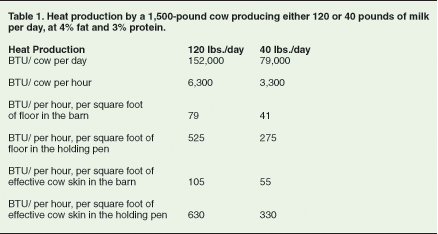The great flood will end! I don’t know when, but it will end!
It has to…
As I write these lines, I can look out the window and see more rain coming our way. In the spirit of improving my fitness, I try to ride my bicycle to work as often as I can. I did this morning, and now I wish that I had brought my kayak instead.
For me, the bad weather only means that I will get wet on my way home.
For the region’s farmers, however, this means one more day being kept out of the fields. We still have time to make up for the time lost due to bad weather, but we better start getting a few good days in a row or our crops and bottom line will be suffering next year.
Next calamity?
Eventually, the rain will stop. And then we will have to deal with heat stress. And the heat stress season starts much earlier these days than it used to.
Do not hyperventilate: This has nothing to do with the alleged global warming. It has to do with the cows that we are now milking.
Heating from inside out. Heat stress in dairy cows is often misunderstood. The problem is not that the environment is heating the cows; we seldom have temperatures exceeding 101.5 F, the normal body temperature of a cow. The problem with heat stress is that the environment is no longer cold enough to dissipate the heat that is produced inside the cow.
Heat production is an inevitable by-product of the cow metabolism — the process of transforming food into milk. The more milk a cow produces, the more heat she generates and has to dissipate. A cow is like your car’s engine: She needs a radiator to get rid of the heat produced by her metabolism.
The BTU game
The nice thing with metabolic heat is that we now have all the equations to calculate exactly how much heat a cow produces. This heat energy could be expressed in any unit of energy.
Here, we will use the British Thermal Unit (BTU) because most people are familiar with it.
In Table 1 (below), we calculated the heat produced by a 1,500-pound cow, producing either 120 or 40 pounds of milk per day at 4 percent fat and 3 percent protein.
Many people are surprised by (1) how much heat a cow can produce, and (2) how much more heat a high-producing cow produces compared to a low-producing animal — nearly twice as much.
An average window-type air conditioner could only cool down two high producing cows. So the first thing to realize with heat stress is that your best cows are the ones that are the most at risk.
Under average relative humidity levels, the threshold temperature for low producing cows is somewhere between 70 and 72 degrees Fahrenheit. This threshold is lowered to 64 to 66 degrees Fahrenheit for your best cows.
Holding pens like ovens
And we make it worse. Two to three times per day we bring our cows to the milking parlor to milk them. They are put into a holding pen where floor space per cow drops from between 80 to 100 square foot per cow down to 10 to 12 square foot per cow.
From a facilities standpoint, we have to move out six times more heat energy per square foot in the holding pen then in the barn.
Roughly put, we should have six times more fans per square foot in the holding pen than in the barn. If not, we slowly cook our cows two to three times per day — every time they are milked.
Cooling cows is even more challenging when we consider the cow crowding associated with the holding pen. For all sorts of good reasons related to cow flow and parlor throughput, we crowd the cows very close to each other in our holding pens.
The exposed skin area in a normal 1,500-pound cow — the area of skin where heat can be exchanged from the cow’s body to her environment — is roughly 60 square foot per cow. In tightly crowded animals, the effective skin area is lowered to about 10 square foot per cow.
Cool them down
Cows in a holding pen no longer can dissipate heat from their sides; only their tops are available as heat exchangers. So even if we move a lot of air through the holding area, the moving air is not very effective at cooling the animals.
In essence, it is as if we took a Honda Civic, changed the engine to a 440 HP, and covered 4/5th of its radiator, which was too small to start with anyway. And we wonder why the engine keeps overheating.
Time to do something
Take a few minutes and walk through your facilities with an outsider that you trust.
Ask them to assist you in conducting a heat stress audit. How many cows leaving the parlor have a body temperature above 102 degrees Fahrenheit? How many cows are standing in a stall? Find the heat stress bottleneck in your operation and implement a program to reduce its impact.
The return will be immediate in the form of additional milk this summer, and delayed in the form of fewer lame and open cows next fall.
Like the commercial says: Just do it!













